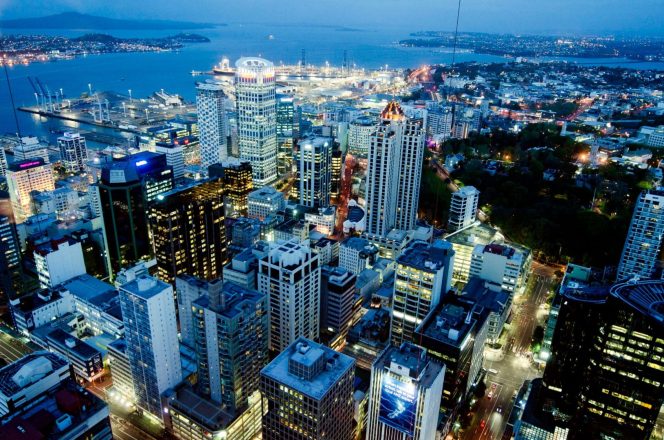Pertumbuhan ekonomi Selandia Baru, yang biasa disebut sebagai PDB, adalah salah satu yang terendah secara global. Namun, masih di depan beberapa ekonomi besar, kata Dana Moneter Internasional (IMF).
Laporan IMF baru-baru ini menyoroti beberapa alasan pertumbuhan global yang lambat dibandingkan sebelum pandemi:
- Akibat pandemi COVID-19
- Invasi Rusia ke Ukraina
- Meningkatnya perpecahan geoekonomi
- Suku bunga yang lebih tinggi oleh bank sentral
- Penurunan harga komoditas global
- Krisis sektoral
- Utang tinggi menyebabkan penurunan dukungan fiskal
- Peristiwa cuaca ekstrim
IMF memprediksi sedikit penurunan pertumbuhan global, dari 3% pada 2023 menjadi 2,9% pada 2024. Pertumbuhan ekonomi “maju” diperkirakan turun dari 1,5% menjadi 1,4% tahun depan. Sementara itu, ekonomi “berkembang” akan mempertahankan pertumbuhan 4%.
Krisis properti China dapat semakin mengurangi pertumbuhan, terutama untuk negara-negara pengekspor komoditas seperti Selandia Baru.
Pada catatan yang lebih cerah, IMF melihat lebih sedikit risiko ekonomi global setelah upaya stabilisasi keuangan di AS dan Swiss.
Angka Pertumbuhan Global
Pertumbuhan PDB Selandia Baru mencapai 1,1%, diperkirakan akan turun sedikit menjadi 1% pada tahun 2024. Ketika membandingkan tingkat pertumbuhan PDB di 25 negara, Macau memimpin dengan prediksi 27,2% untuk 2024, sementara Guinea Ekuatorial berada di bagian bawah, diperkirakan turun sebesar 5.5%. Selandia Baru, bersama dengan negara-negara maju lainnya seperti Jerman, Jepang, dan Australia, berada di ujung bawah daftar ini.
Prospek Inflasi
Inflasi global diperkirakan turun dari 6,9% pada 2023 menjadi 5,8% pada 2024. Faktor-faktor yang berkontribusi terhadap penurunan ini termasuk kebijakan moneter yang lebih ketat dan penurunan harga komoditas. Pada tahun 2024, harga konsumen diperkirakan akan naik lebih cepat di Australia (4%) dan Singapura (3,5%) daripada di Selandia Baru (2,7%).
Prediksi Pengangguran
Selandia Baru kemungkinan akan mengalami peningkatan pengangguran, naik dari 3.6% saat ini menjadi 4.9% pada akhir 2024. Tingkat ini sebanding dengan proyeksi 4,3% Australia untuk periode yang sama. Negara-negara maju regional lainnya, seperti Jepang dan Hong Kong, memperkirakan tingkat pengangguran yang lebih rendah.
Kekhawatiran Atas Perubahan Iklim dan Geopolitik
IMF memperingatkan potensi lonjakan harga pangan dan energi karena peristiwa cuaca buruk atau pergolakan geopolitik. Misalnya, invasi Rusia ke Ukraina pada tahun 2022 menyebabkan peningkatan biaya bahan bakar, makanan, dan pupuk. Gangguan masa depan yang serupa dapat menyebabkan volatilitas pasar lebih lanjut. IMF mendesak negara-negara untuk mempercepat adopsi teknologi hijau dan mengatasi dampak perubahan iklim.






























































